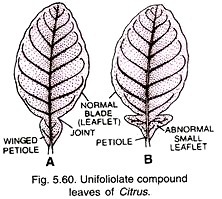Replication of the chromosomes of eukaryotic cells is a much more complex process than that in prokaryotes and the DNA viruses.
The added complexity is due in part to the greater length of the eukaryotic chromosome. Nonetheless, there are several fundamental similarities between DNA replication in eukaryotes, prokaryotes, and viruses.
For example, (1) replication is semiconservative; (2) RNA primers are used; (3) replication occurs in both directions; (4) new DNA is synthesized along the lagging strand as a series of Okazaki fragments; and (5) the overall direction of elongation is 5′ to 3′.
Semiconservative Replication in Eukaryotes:
Verification of semiconservative replication of DNA in eukaryotic cells was provided in a series of experiments carried out by J. H. Taylor and P. Woods in 1967. Taylor and Woods grew Vicia faba bean root tip cells for one generation of time in a medium containing 3H-thymidine and then transferred the root tips to 3H-free medium where they were allowed to enter another round of cell division. However, colchicine was added to the medium to prevent anaphase separation of sister chromatids.
The cells were then examined by combined light microscopy and autoradiography, and the sister chromatids of each chromosome were found to contain equal amounts of radioactive label (i.e., equal numbers of exposure grains were seen in each chromatid) (Fig. 21-9).
When cells were allowed to duplicate the chromosomes and enter a second round of mitosis in unlabeled medium, the label was found in only one of the two chromatids comprising the metaphase chromosomes. The sister chromatid not distinguishable by autoradiography during this second metaphase consisted entirely of unlabeled nucleotides. These observations are consistent with a semiconservative model of chromosome replication.
Replicons of Eukaryotic Chromosomes:
Whereas the replicating prokaryotic chromosome may consist of one replicon, the average chromosome of a eukaryotic cell contains thousands of replicons. Replication of DNA does not begin in all replicons at the same time of the S phase (Fig. 21-10). Instead, some sort of control mechanism turns each replicon on at a specific time. Using the pulse-labeling technique combined with autoradiography, it is possible to show that certain regions of a chromosome always replicate early in the S phase and other regions are active at later times. Euchromatic regions are usually replicated first and heterochromatic regions later in the S phase.
Nucleosome Assembly and DNA Replication:
The duplication of a eukaryotic chromosome not only requires the replication of the chromosomal DNA but also necessitates the synthesis of large quantities of new histones and the assembly of additional nucleosomes. During chromosome duplication, the histone core and DNA double helix of each nucleosome are temporarily separated, but as the growth of the leading strand proceeds these core histones rejoin the newly formed double helix, thereby quickly restoring the chromatin’s nucleosomal organization (Fig. 21- 11).
It is believed that the temporarily detached nucleosome cores reassociate with the double-helical DNA that contains the leading strand at a position about 125 nucleotides from the leading strand’s 3′ end. As the lagging strand elongates, newly synthesized histones associate with this double helix, thereby creating new nucleosomes about 250 nucleotides from the 5′ end of the first Okazaki fragment.
In other words, the nucleosome cores in front of the replication fork are conserved and transferred to the newly formed double helix containing the leading strand, and new cores are formed for the double helix containing the lagging strand. Histone molecules required for these new nucleosomes are synthesized during the S phase of the cell cycle.
Repetitive DNA:
The DNA of prokaryotic chromosomes consists essentially of unique sequences-, that is, except for the genes encoding ribosomal RNAs, base-pair sequences are not repeated. In contrast, the chromosomes of eukaryotic organisms contain repetitive DNA, that is, base sequences that are repeated many times. Indeed, it has been estimated that 20% to 50% of the genome of eukaryotes may be represented by repetitive DNA. The rest of the DNA consists of unique sequences (i.e., single copies). The amount of DNA represented by repeated sequences is determined experimentally by allowing fragmented and denatured DNA to reanneal by the process of complementary base pairing.
The rate of reannealing is directly related to the quantity of repetitive DNA present. It is generally acknowledged that the unique sequences represent structural genes for messenger RNA and proteins. There are two broad classes of repetitive DNA: moderately repetitive (from as few as 2 to as many as 100,000 copies of a particular sequence) and highly repetitive (more than 100,000 copies). Moderately repetitive DNA includes the genes for certain proteins such as the histones and ribosomal proteins and the various ribosomal RNAs.
The functions of the highly repetitive sequences are uncertain, and they are located in the inactively expressed heterochromatic regions of the nucleus. Apparently, some moderately repetitive DNA can migrate from one chromosome to another; such nomadic sequences may be analogous to the transposable elements in prokaryotic cells and may have a role in the selective gene expression that characterizes an organism’s development.


